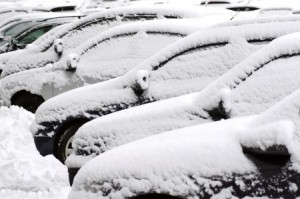Debunking Winter Driving Myths
There’s a lot of advice out there about how to drive during the cold winter months, but not all of it is useful. Today, we explore some common winter driving cautions and determine if they are fact or myth.
1. Let your car warm up before driving when it’s cold out – This myth takes one piece of general information, that cars are more fuel efficient when running in warmer temperatures, and incorrectly assumes you need to let your car warm up to optimal temperature before driving away in frigid conditions. During the 1980s and 90s, car companies began replacing carburetors with electronic fuel injectors, which helps the engine get the optimal mix of fuel and air. Fuel injectors essentially made the need to warm up your car irrelevant, and experts say your car reaches ideal temperature at a faster rate when driving. Car experts suggest you should allow your car to run for no more than 30 seconds before driving away, otherwise you’re just burning fuel!
2. All season tires mean they preform well in all four seasons – As we explained in our post on winter tires, swapping out your all season tires for a set of winter tires can make all the difference. Not only do winter tires provide you with a better grip of the road, they also help you stop sooner, which can be the difference between a safe stop and a fender bender. If you live in an area that sees a lot of snow during the winter months, consider investing in a pair of snow tires.
3. You can get a ticket for not fully clearing your windshield and rear window of snow – This one is fact. There have probably been times when you’ve had to scrape your windshield off multiple times in one day, and although it can be annoying, it’s important you don’t ignore the snow. Driving in poor conditions is tough enough without doing it with impaired vision. Failing to clear your windshield makes you a danger to yourself and everyone on the road, and the police can ticket you for it.
4. Reducing tire pressure will increase your grip on the road – Some people believe a flatter tire will increase their traction, but improper tire pressure can make driving dangerous. Your tire pressure will drop as the temperature declines, so keep on top if your tire pressure as the weather fluctuates. Keep a handheld guage in your glove box for easy access.
Related source: Auto Express, The Spec
-
Should I Warm Up My Car When It’s Cold Out?
 Dec 4, 2013
Dec 4, 2013The temperatures are slated to drop significantly over the next few days, but that doesn’t mean everyone can just curl up with a blanket until spring returns. People still have to get to work or the grocery store, and many times they’ll start their car and let it run for a few minutes before driving […]
-
Daylight Savings Time and Car Accidents
 Nov 4, 2014
Nov 4, 2014You probably enjoyed getting an extra hour of sleep this weekend, but it can take your body clock a while to get back in its natural rhythm, which can prove dangerous on the roads. After analyzing traffic accident data, researchers at Texas A&M University found there to be a 7 percent increase in traffic accidents […]
-
5 Tips for Choosing the Right Auto Repair Shop
 Sep 6, 2013
Sep 6, 2013When your car needs work, two things come to mind. You want someone who will get the repair done quickly, and most importantly, someone who won’t overcharge you for the work. But how do you know which auto repair shops are honest and which ones want to take you for a ride? Below we share […]





